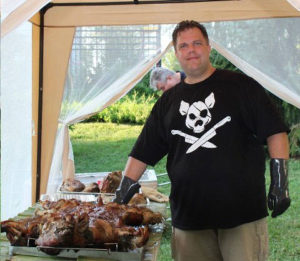by Buck Reed
If you were not lucky enough to learn the art of cooking from your mother or, even better, your grandmother, all is not lost. It really is never too late to practice and obtain the skills needed to use the most important room in your home.
There are a number of outlets here in Frederick County that offer a glimpse into the culinary world. Frederick Community College offers classes to both professional and novice cooks who are looking to expand their cooking chops. The Department of Parks and Recreation also offers classes for kids, adults, and couples. Both offer a delicious experience in a relaxed professional atmosphere.
But what about learning to cook from a book? Can you gain the finesse needed to become a skilled cook between the pages of a cookbook? I would say no. I do not care what current culinary superstar wrote the book, there is no way you will be able to pick up every single idea they have about cooking. I do believe that if you read a successful, chef’s words you can develop your own philosophy on cooking. You may eventually be able to duplicate their signature dish as well and, given time, you my even be able to make some subtle changes to the dish to make it your own.
If you are working from a book you need to concentrate on the techniques that the chef/writer is working with and duplicate and perfect them. Then, you need to concentrate on getting your flavors down. All this takes time and effort, and there is no shortcut. Nobody is born or wakes up one day with the skills and knowledge it takes to be a great cook. You must practice. You must taste new dishes and try to figure out what ingredients and techniques were used to obtain their results.
Which brings us to the internet. Right now, there is no shortage of videos, blogs, and even websites promising a complete set of cooking courses that promise to make you a culinary icon, if not in your kitchen then in your own mind. As soon as I run out of ideas for this article, I promise I will start working on my own website, promising the same lofty goals. And given my experience, it is very easy for me to say that I can learn something from almost all of these outlets. But, if you do not have the basics down, it might be very difficult for you to gain any benefit from these sources.
Cooking is made up of a great deal of science; you can glimpse that science from a book to some extent, but the rest of it is art. And art is pain and understanding and calls upon us to open our minds to new ideas. Finding the right source of instruction that would suit you is something you will have to seek out yourself.


